![有限元方法的數學理論(第3版) [The Mathematical Theory of Fintite Element Methods Third Edition]](https://pic.windowsfront.com/10762453/36da39a8-76c6-48d7-8808-a7b9f4a1885a.jpg)

具體描述
內容簡介
This edition contains four new sections on the following topics: the BDDC domain decomposition preconditioner (Section 7.8), a convergent adaptive algorithm (Section 9.5), interior penalty methods (Section 10.5) and Poincare-Friedrichs inequalities for piecewise Wp1 functions (Section 10.6).We have made improvements throughout the text, many of which were suggested by colleagues, to whom we are grateful. New exercises have been added and the list of references has also been expanded and updated.內頁插圖
目錄
series prefacepreface to the third edition
preface to the second edition
preface to the first edition
0 basic concepts
0.1 weak formulation of boundary value problems
0.2 ritz-galerkin approximation
0.3 error estimates
0.4 piecewise polynomial spaces - the finite element method
0.5 relationship to difference methods
0.6 computer implementation of finite element methods
0.7 local estimates
0.8 adaptive approximation
0.9 weighted norm estimates
0.x exercises
1 sobolev spaces
1.1 review of lebesgue integration theory
1.2 generalized (weak) derivatives
1.3 sobolev norms and associated spaces
1.4 inclusion relations and sobolev's inequality
1.5 review of chapter 0
1.6 trace theorems
1.7 negative norms and duality
1.x exercises
2 variational formulation of elliptic boundary value problems
2.1 inner-product spaces
2.2 hilbert spaces
2.3 projections onto subspaces
2.4 riesz representation theorem
2.5 formulation of symmetric variational problems
2.6 formulation of nonsymmetric variational problems
2.7 the lax-milgram theorem
2.8 estimates for general finite element approximation
2.9 higher-dimensional examples
2.x exercises
3 the construction of a finite element space
3.1 the finite element
3.2 triangular finite elements
the lagrange element
the hermite element
the argyris element
3.3 the interpolant
3.4 equivalence of elements
3.5 rectangular elements
tensor product elements
the serendipity element
3.6 higher-dimensional elements
3.7 exotic elements
3.x exercises
4 polynomial approximation theory in sobolev spaces
4.1 averaged taylor polynomials
4.2 error representation
4.3 bounds for riesz potentials
4.4 bounds for the interpolation error
4.5 inverse estimates
4.6 tensor. product polynomial approximation
4.7 isoparametric polynomial approximation
4.8 interpolation of non-smooth functions
4.9 a discrete sobolev inequality
4.x exercises
5 n-dimensional variational problems
5.1 variational formulation of poisson's equation
5.2 variational formulation of the pure neumann problem
5.3 coercivity of the variational problem
5.4 variational approximation of poisson's equation
5.5 elliptic regularity estimates
5.6 general second-order elliptic operators
5.7 variational approximation of general elliptic problems
5.8 negative-norm estimates
5.9 the plate-bending biharmonic problem
5.x exercises
6 finite element multigrid methods
6.1 a model problem
6.2 mesh-dependent norms
6.3 the multigrid algorithm
6.4 approximation property
6.5 w-cycle convergence for the kth level iteration
6.6 ]/-cycle convergence for the kth level iteration
6.7 full multigrid convergence analysis and work estimates
6.x exercises
7 additive schwarz preconditioners
7.1 abstract additive schwarz framework
7.2 the hierarchical basis preconditioner
7.3 the bpx preconditioner
7.4 the two-level additive schwarz preconditioner
7.5 nonoverlapping domain decomposition methods
7.6 the bps preconditioner
7.7 the neumann-neumann preconditioner
7.8 the bddc preconditioner
7.x exercises
8 max-norm estimates
8.1 main theorem
8.2 reduction to weighted estimates
8.3 proof of lemma 8.2.6
8.4 proofs of lemmas 8.3.7 and 8.3.11
8.5 lp estimates (regular coefficients)
8.6 lp estimates (irregular coefficients)
8.7 a nonlinear example
8.x exercises
9 adaptive meshes
9.1 a priori estimates
9.2 error estimators
9.3 local error estimates
9.4 estimators for linear forms and other norms
9.5 a convergent adaptive algorithm
9.6 conditioning of finite element equations
9.7 bounds on the condition number
9.8 applications to the conjugate-gradient method
9.x exercises
10 variational crimes
10.1 departure from the framework
10.2 finite elements with interpolated boundary conditions
10.3 nonconforming finite elements
10.4 isoparametric finite elements
10.5 discontinuous finite elements
10.6 poincare-friedrichs inequalitites for piecewise w1p functions
10.x exercises
11 applications to planar elasticity
11.1 the boundary value problems
11.2 weak formulation and korn's inequality
11.3 finite element approximation and locking
11.4 a robust method for the pure displacement problem
11.x exercises
12 mixed methods
12.1 examples of mixed variational formulations
12.2 abstract mixed formulation
12.3 discrete mixed formulation
12.4 convergence results for velocity approximation
12.5 the discrete inf-sup condition
12.6 verification of the inf-sup condition
12.x exercises
13 iterative techniques for mixed methods
13.1 iterated penalty method
13.2 stopping criteria
13.3 augmented lagrangian method
13.4 application to the navier-stokes equations
13.5 computational examples
13.x exercises
14 applications of operator-interpolation theory
14.1 the real method of interpolation
14.2 real interpolation of sobolev spaces
14.3 finite element convergence estimates
14.4 the simultaneous approximation theorem
14.5 precise characterizations of regularity
14.x exercises
references
index
精彩書摘
We will take this opportunity to philosophize about some power-ful characteristics of the finite element formalism for generating discreteschemes for approximating the solutions to differential equations. Being based on the variational formulation of boundary value problems, it is quite systematic, handling different boundary conditions with ease; one simply re-places infinite dimensional spaces with finite dimensional subspaces. What results, as in (0.5.3), is the same as a finite difference equation, in keeping with the dictum that different numerical methods are usually more similarthan they are distinct. However, we were able to derive very quickly the convergence properties of the finite element method. Finally, the notation for the discrete scheme is quite compact in the finite element for mulation.This could be utilized to make coding the algorithm much more efficient if only the appropriate computer language and compiler were available. Thislatter characteristic of the finite element method is one that has not yet been exploited extensively, but an initial attempt has been made in the sys-tem fec (Bagheri, Scott & Zhang 1992). (One could also argue that finiteele ment practitioners have already taken advantage of this by developingtheir own "languages" through extensive software libraries of their own, but this applies equally well to the finite-difference practitioners.)......
前言/序言
Mathematics is playing an ever more important role in the physical and biological sciences, provoking a blurring of boundaries between scientific disciplines and a resurgence of interest in the modern as well as the clas-sical techniques of applied mathematics. This renewal of interest, both inresearch and teaching, has led to the establishment of the series Texts in Applied Mathematics (TAM).The development of new courses is a natural consequence of a high level of excitement on the research frontier as newer techniques, such asnumerical and symbolic computer systems, dynamical systems, and chaos,mix with and reinforce the traditional methods of applied mathematics.Thus, the purpose of this textbook series is to meet the current and future needs of these advances and to encourage the teaching of new courses.
TAM will publish textbooks suitable for use in advanced undergraduateand beginning graduate courses, and will complement the Applied Mathe-matical Sciences (AMS) series, which will focus on advanced textbooks andresearch-level monographs.
用戶評價
在我的學術研究過程中,對某些前沿的科學計算方法有著迫切的需求。有限元方法無疑是其中一個重要的分支。我已經閱讀過一些關於有限元方法的教材,但總覺得在對某些高級主題的介紹上不夠深入,例如非綫性問題的處理、任意形狀網格上的精度分析,以及與機器學習等新興技術的結閤。這本書《有限元方法的數學理論(第3版)》的名字讓我看到瞭希望,第三版通常意味著作者對該領域最新發展有著深入的瞭解和整閤。我希望這本書能夠包含更多關於高維問題、多物理場耦閤問題以及大規模計算的有限元方法策略。我也非常期待書中對於如何進行有效的前後處理,以及後處理結果的可靠性評估方麵的數學理論指導。這本書的齣版,對我來說,更像是一次與最新研究動態的連接,我希望通過它,能夠站在巨人的肩膀上,推動我的研究更上一層樓,並為相關領域的理論和應用發展貢獻力量。
評分最近終於入手瞭《有限元方法的數學理論(第3版)》,一直對有限元方法抱有濃厚的興趣,尤其是它在解決復雜物理問題時展現齣的強大威力。這本書的名字本身就透露齣一種嚴謹和深入的氣息,讓我對接下來的閱讀充滿瞭期待。我之前接觸過一些有限元方法的入門級書籍,但總覺得有些概念上的“隔靴搔癢”,缺乏一種從根本上理解其數學原理的深刻洞察。這本書的第三版,想必在內容的更新和深化上會有不小的提升,我特彆關注它在誤差分析、收斂性證明以及在高階方法和自適應網格生成等前沿領域的探討。我希望它能像一本精心打磨的工具書,在每一次遇到問題時,都能提供清晰的理論支撐和嚴謹的推導,幫助我真正掌握有限元方法的精髓,而不僅僅是停留在調包和應用層麵。這本書的厚度也預示著其內容的豐富程度,我相信通過細緻的研讀,一定能將我對有限元方法的理解提升到一個全新的高度,從而更有效地應用於我所研究的領域。
評分我一直認為,理解一個復雜數學理論的關鍵在於其清晰的結構和邏輯。這本書《有限元方法的數學理論(第3版)》的書名本身就傳遞齣一種係統性和專業性,這正是我所尋求的。我希望它能夠為我提供一個邏輯嚴謹、層層遞進的學習路徑。我設想本書會從離散化理論的基礎開始,逐步過渡到插值誤差、投影誤差以及解的收斂性分析。我特彆關注書中對於不同類型的有限元(如拉格朗日元、Hermite元等)的數學性質和適用範圍的詳盡論述,以及它們在不同邊界條件和問題類型下的性能錶現。我期望這本書能夠提供一些精心設計的例子和練習題,幫助我鞏固所學的概念,並能夠熟練地運用所學的數學工具來分析和解決實際的有限元問題。這本書的第三版,一定凝聚瞭作者多年的教學和研究經驗,相信它能夠成為一本值得反復研讀的經典之作。
評分我是一個喜歡刨根問底的學習者,對於任何一個數學概念,我總是希望能夠深入到其最本質的數學結構中去。有限元方法作為一種強大的數值求解技術,其背後蘊含著深刻的數學思想。我購買《有限元方法的數學理論(第3版)》這本書,正是希望能夠係統地學習和理解其數學理論的精髓。我特彆關注書中對泛函分析、Sobolev空間、變分原理等作為有限元方法數學基礎的介紹。我期望這本書能夠提供清晰的定義、嚴格的證明,並能夠循序漸進地引導讀者理解這些抽象概念是如何與有限元方法的構建和分析聯係起來的。我希望這本書能夠不僅僅是羅列公式和定理,更能闡述其背後的數學邏輯和幾何直覺,讓我能夠真正地“看見”有限元方法的數學之美,並能夠舉一反三,將所學知識遷移到其他相關領域的研究中。
評分作為一名長期在工程領域摸爬滾打的實踐者,我深知理論與實踐之間的鴻溝。很多時候,我們能夠熟練地使用有限元軟件進行模擬,但當遇到棘手的工程問題,或者需要對模擬結果進行更深入的解釋和驗證時,就會顯得力不從心。因此,我一直在尋找一本能夠真正連接理論與實踐的橋梁。這本書《有限元方法的數學理論(第3版)》正是這樣的存在。我設想它會從最基本的概念入手,一步步構建起整個理論體係,讓讀者不僅知其然,更知其所以然。我尤其期待書中對不同類型偏微分方程的有限元離散化方法、穩定性條件以及相關的數值技巧的深入闡述。我希望這本書能像一位經驗豐富的導師,在我遇到理論睏惑時,能夠提供詳盡的解釋和清晰的思路,幫助我建立起紮實的數學基礎,從而在麵對實際工程挑戰時,能夠做齣更明智的決策,並能更準確地評估和理解模擬結果的可靠性,最終提升我解決實際工程問題的能力。
評分數學理論很多,比較係統吧
評分非常好非常好非常好非常好非常好
評分真品,好評沒得說,下次還買
評分喜歡這書,對於計算數學方嚮來說值得擁有,並且書沒有味道,正版,很好的哈
評分非常好非常好非常好非常好非常好
評分學習有限元可以買的一本書,介紹有限元數學基礎。
評分老師推薦的
評分印刷質量很好,留著再看吧。
評分非常好非常好非常好非常好非常好
相關圖書
本站所有內容均為互聯網搜尋引擎提供的公開搜索信息,本站不存儲任何數據與內容,任何內容與數據均與本站無關,如有需要請聯繫相關搜索引擎包括但不限於百度,google,bing,sogou 等
© 2025 book.coffeedeals.club All Rights Reserved. 靜流書站 版權所有


![儀器科學與技術學科研究生係列教學參考書:視覺測量原理與方法 [The Principle of Vision Metrology] pdf epub mobi 電子書 下載](https://pic.windowsfront.com/10881154/d63c67d5-a0f1-4a9e-b6cb-918b03d7ca08.jpg)



![華章數學原版精品係列:概率論基礎教程(英文版·第8版) [A First Course in Probability] pdf epub mobi 電子書 下載](https://pic.windowsfront.com/11577087/546335beN531b7431.jpg)
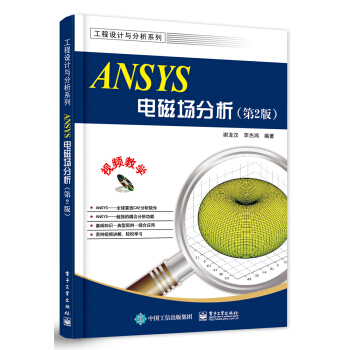


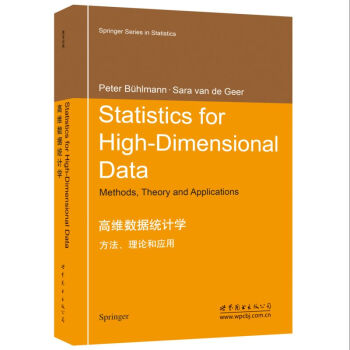

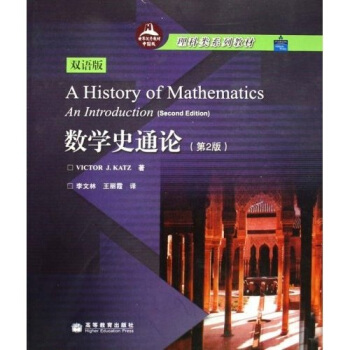
![生態學名著譯叢:生態模型基礎(第3版) [Fundamentals of Ecological Modelling] pdf epub mobi 電子書 下載](https://pic.windowsfront.com/10000904/5671059dN225ab2e1.jpg)

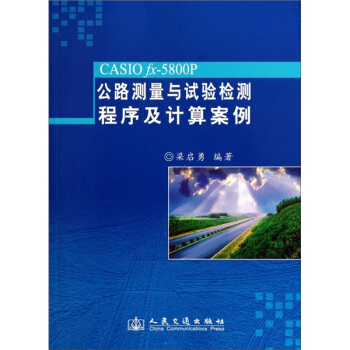
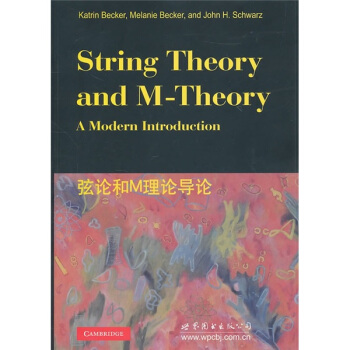
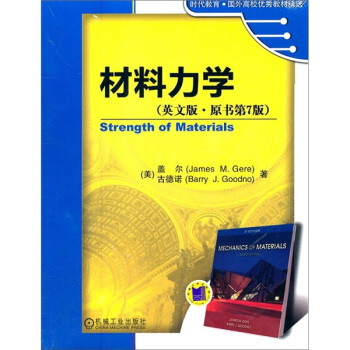
![繩圈的數學 [Mathematics of String Figures] pdf epub mobi 電子書 下載](https://pic.windowsfront.com/10825593/80ea2faf-ac04-4ea8-b9f6-b1f3db77305f.jpg)

